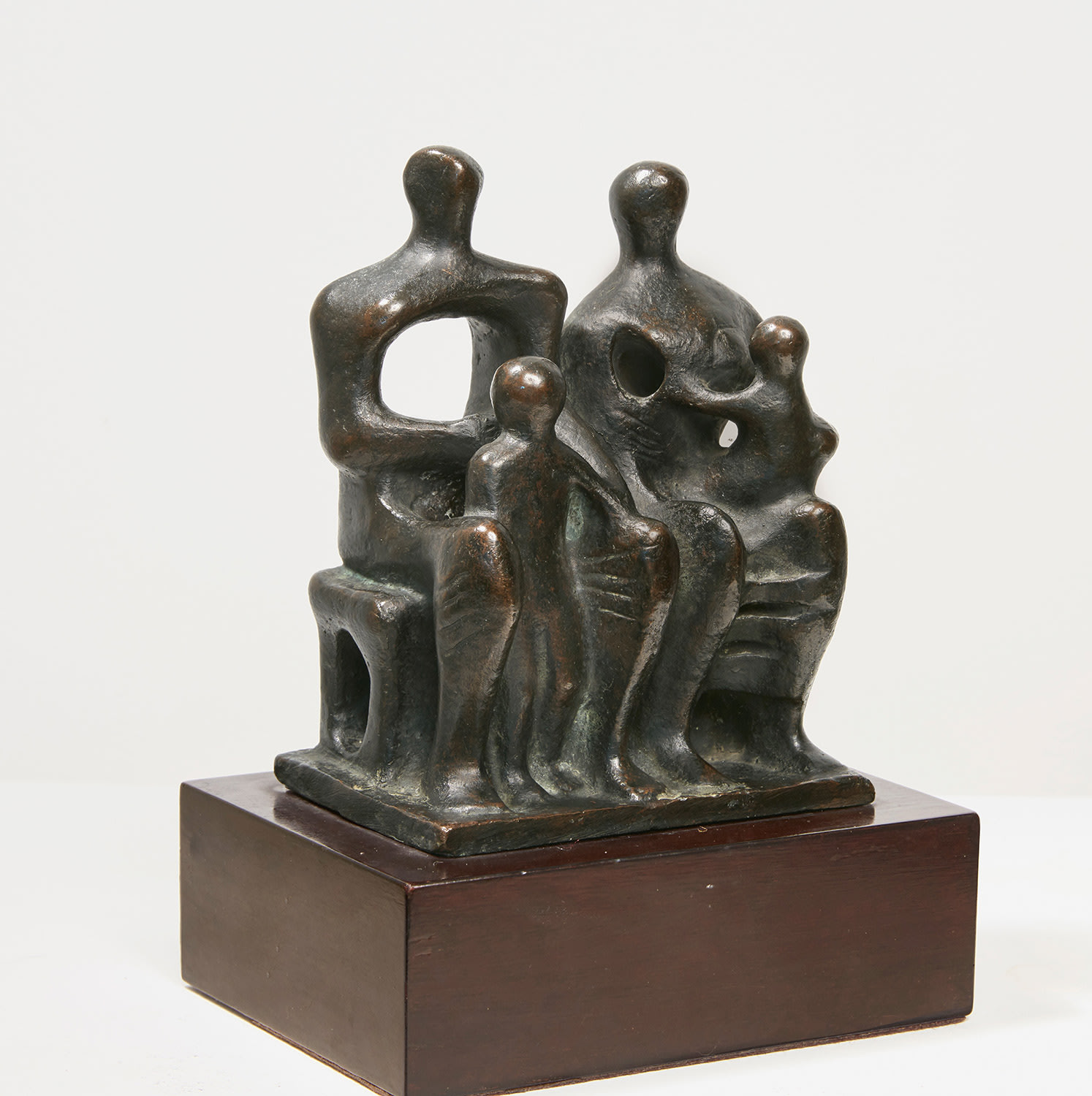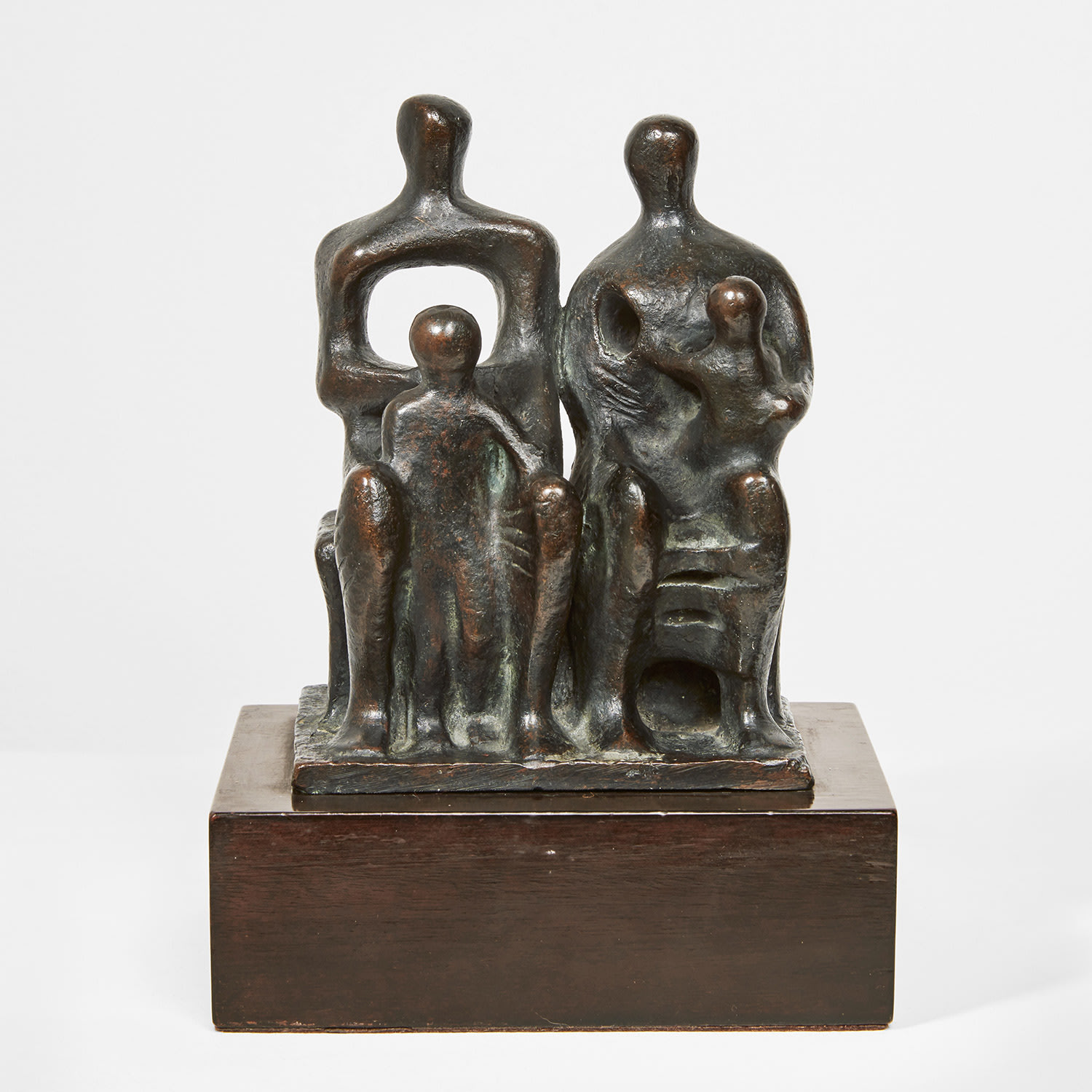





Property from the Estate of Lillian Florsheim
17Ο◆
Henry Moore
Family Group
bronze
14.2 x 11.2 x 7.5 cm (5 5/8 x 4 3/8 x 2 7/8 in.)
Conceived in 1945 and cast in bronze by 1957. This work is from an edition of 6 plus 1 artist's proof cast circa 1945 and a second edition of 9 plus 1 artist's proof which was cast between 1955-1957.
This work is recorded in the archives of the Henry Moore Foundation.
This work is recorded in the archives of the Henry Moore Foundation.